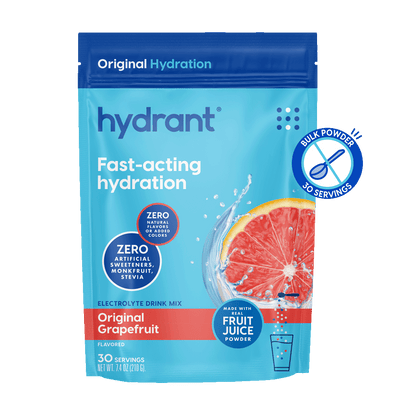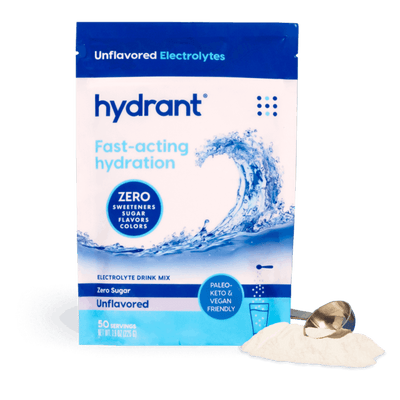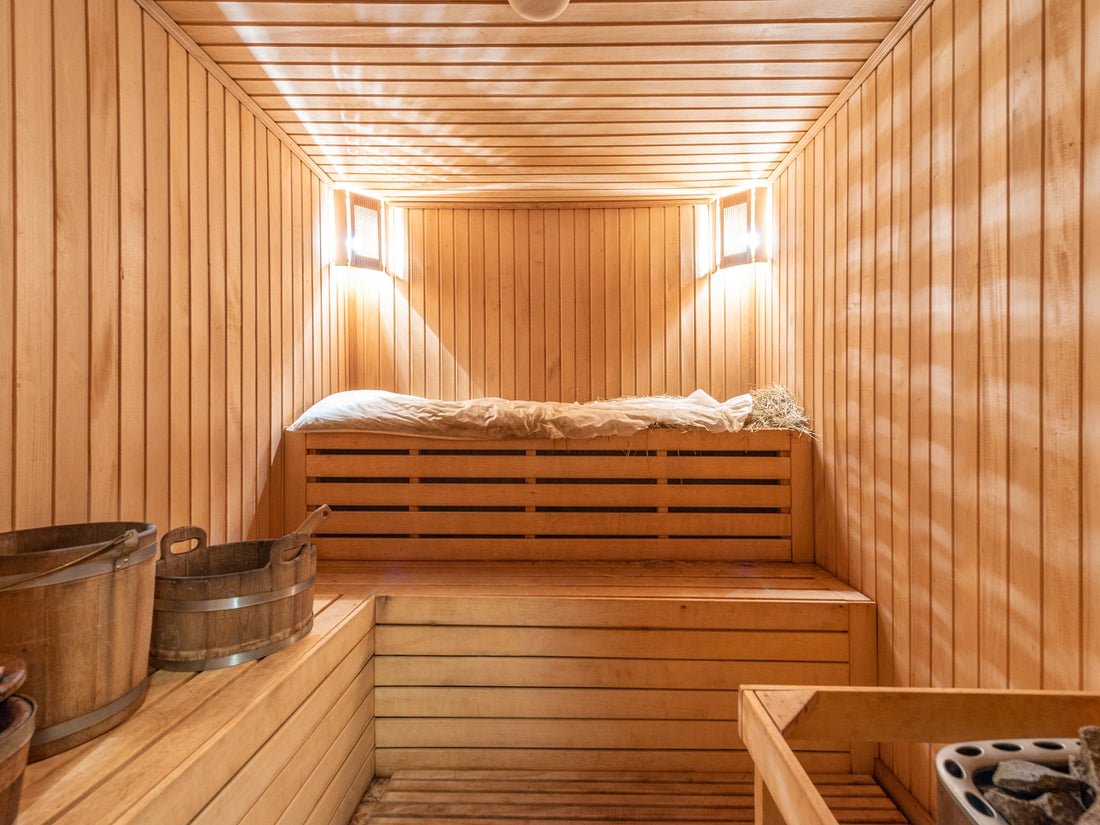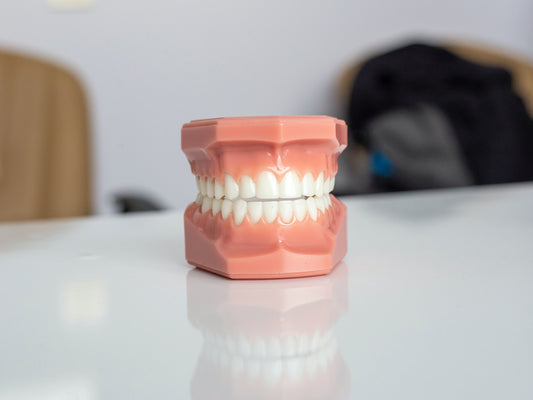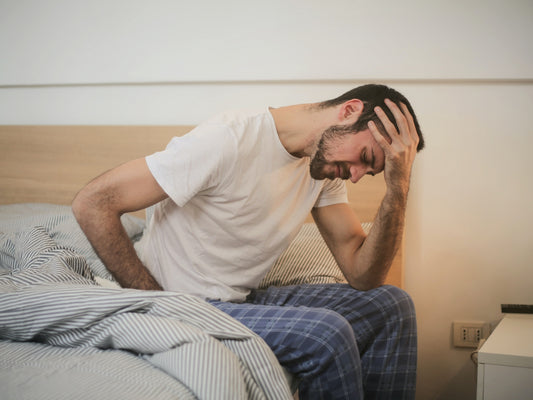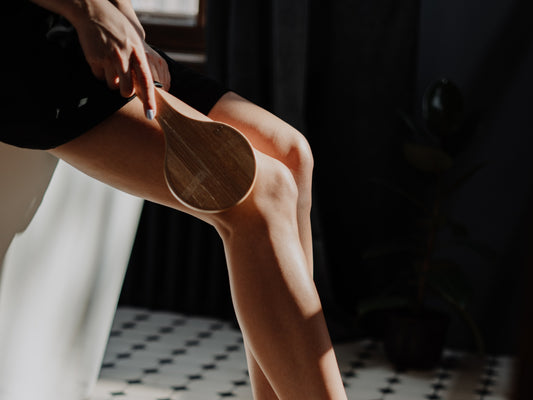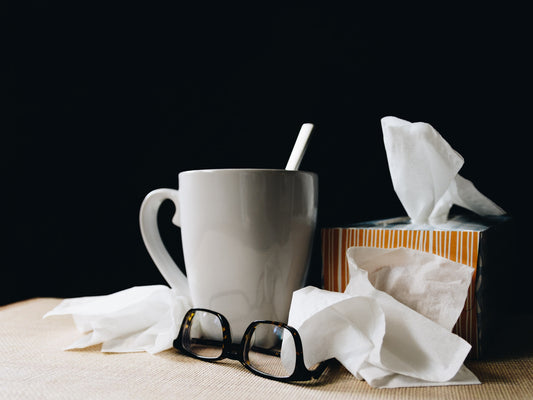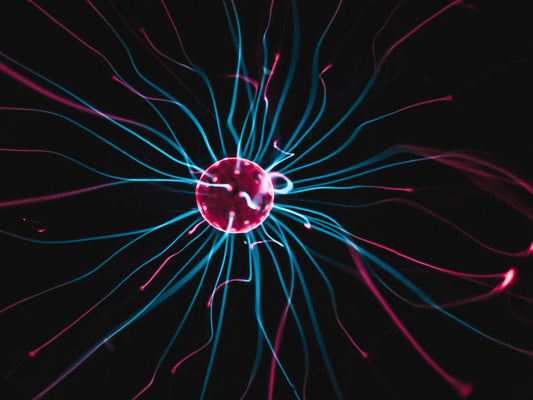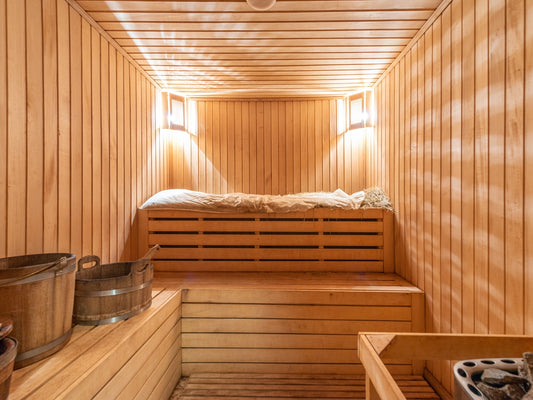Sauna is often glamourized in pop culture, and rightly so. It’s synonymous with relaxation and has numerous benefits. But getting a headache after the session may ruin the whole experience. It may even make you doubtful about the whole process entirely.
Here we have gathered the details about all possible reasons you might experience a headache after sauna, backed by medical science. Let’s get started.
Three Factors That Could Trigger Headache After Sauna
A sauna is usually a small wooden room or building where people bathe in the heat. It triggers sweating which is therapeutic. Saunas are perfectly safe and healthy for all people, so you don’t have to worry. However, the National Health Service (NHS) doesn't recommend pregnant women to take sauna as overheating may be detrimental to their health.
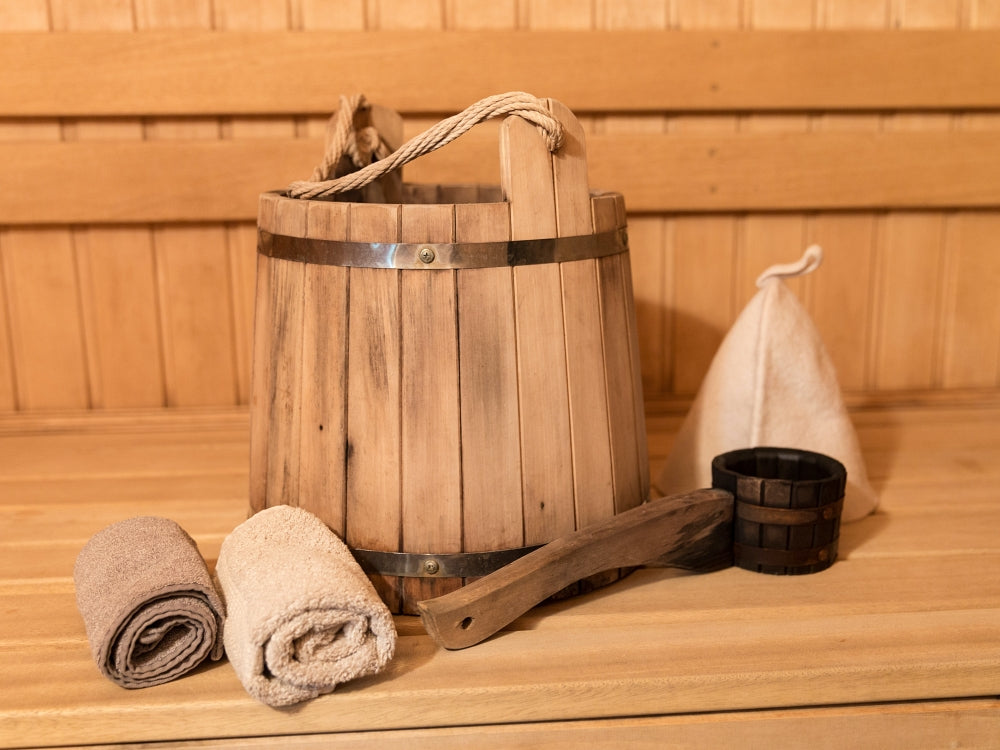
Here are some factors that may contribute to headaches after the sauna.
1. Dehydration — Leading cause of headache after sauna
Usually, dehydration is the main culprit behind the uneasiness you feel after a sauna bath. It’s the loss of fluid to the point where the body doesn’t have much left for normal organ function [1]. In fact, if you’re feeling thirsty, you’re already slightly dehydrated [2].
Why does dehydration cause headaches?
Sauna triggers excessive sweating, which can quickly lead to dehydration. This causes the brain and veins to contract, which literally shrinks your brain, causing it to move away from the skull [2]. This puts pressure on your nerves, and that results in pain.
Some people are sensitive and can get headaches due to mild dehydration. Having a glass or two of water quickly rehydrates your brain, relieving pain.
Dehydration can even become life-threatening if accompanied by the following symptoms [3]:
- Lethargy and confusion
- Fainting
- Dark-colored urine or no pee
- Rapid heartbeat
- Extremely dry skin
Loss of water
Taking a bath in a sauna is relaxing, and it forces the body to release many toxins. But this poses the risk of dehydration.
Your body loses water at a much higher rate due to sweating, which is normal in most cases but can be a problem if the water content in your body goes down a certain limit. As a general rule, time your session 15 to 20 minutes [4].
Fortunately, the right way is recommended by the “American College of Sports and Medicine,” and it’s pretty simple [5].
Beginners: Make sure you don’t overdo it. Use it for no more than 5 to 10 minutes.
Experts: Even if you are used to saunas, don’t make your session longer than 15 minutes at a time.
Loss of electrolytes
Water is not the only thing your body loses due to dehydration. Electrolytes are lost too, which are crucial for normal bodily functions.
Extreme sweating during a sauna session may result in loss of electrolytes such as magnesium, calcium, phosphorus, potassium, and sodium [6]. Keep in mind the following symptoms that come with the loss of electrolytes:
- Headaches
- Faster heartbeat
- Lethargy
- Nausea
- Vomiting
Can sauna trigger migraines?
No, sauna doesn’t trigger migraines or headaches in general. In fact, studies suggest that a relaxing session in the sauna helps relieve chronic tension-type headache (CTTH) [7]. Regular sessions actually prevent headaches and mental stress in people.
When people experience a headache after a sauna bath, it’s usually a side effect of dehydration [8].
Although it varies from person to person, a migraine is more likely to be caused by factors such as hormonal changes, stress, certain foods, and sensory stimuli [9].
Due to the therapeutic nature of the sauna, it’s highly unlikely that you’ll get a migraine after it. So, relax and enjoy your bath time. If you still experience discomfort, then contact your doctor for an expert opinion.
2. How to prevent headaches after sauna?
This goes without saying, avoid diuretic drinks (causing dehydration at a higher rate) before and after the sauna.
The most common ones are alcohol and caffeinated drinks such as coffee, teas, and energy sodas [10]. Since sauna already causes dehydration, it’s better to have drinks that actually hydrate the body.
2. Rehydrate yourself
If you experience a headache right after coming out of a hot misty bath, chances are you lost tons of fluid and electrolytes.
Plain water will do good, but regular water alone doesn’t have all the electrolytes lost due to sweating, and replenishing them is just as important.
If you want to fully rehydrate yourself quickly, electrolyte supplements are arguably your best bet. Our hydrate mix is designed to maximize hydration, thanks to a mix of all the essential electrolytes such as magnesium, potassium, zinc, and sodium. Also, it adds a delicious flavor to plain water!
Smoothies and fresh juices are other great options to get a quick dose of fluid and electrolytes, while also being an excellent source of vitamins and minerals.
3. Sauna on an empty stomach
Being on an empty stomach and combining it with excessive sweating can quickly cause your blood sugar level to drop [11, 12].

Dehydration or not, it can seriously affect your energy levels and can cause dizziness, lethargy, and headaches.
You may feel relaxed in the sauna, but your body works hard to maintain the core body temperature. In the process, your energy resources are depleted significantly. That’s why it’s usually recommended to have a snack at least an hour before entering the sauna.
4. Sauna right after a workout
Working out increases body temperature and blood pressure. Having a sauna bath right after a workout can trigger excessive sweating, which is going to dehydrate you at a higher rate. Experts say to wait at least 10 minutes after an exercise session. This will give your body time to rest and normalize.
5. Suitable clothing
There is no hard and fast rule when it comes to choosing clothes for a sauna. It also depends on the culture of the specific place. Some people go nude as well to reap the benefits to the fullest.
But generally, donning a cotton towel is the best approach. It will not only absorb the sweat but also keep your body ventilated.
Some prefer wearing skull caps because they protect the head from excessive heat, which otherwise can lead to a headache.
6. Plan your session
Anything in excess is bad, even a sauna bath. Experts suggest planning your session to not exceed 10 to 15 minutes. However, professionals and athletes can have a 30 minutes session after training [13].
These suggested intervals are appropriate for an epic session and fast healing. Going over that poses risks of headaches and other discomforts.
You can also follow the guidelines of the North American Sauna Society, which recommends a 10-minute warm-up in a dry sauna for a better experience [14].
Traditional sauna vs. Infrared Sauna — which causes more headaches?
Both are perfectly healthy to take, but traditional saunas are more likely to give you headaches. It’s because traditional saunas heat the environment more. This makes the atmosphere harder to tolerate and may result in discomfort.

On the other hand, infrared saunas actually use electromagnetic radiation to heat your body directly and not the air in the room. Your body gets directly heated, but the environment is less harsh [15].
Anyhow, people have been taking a sauna for centuries now, and if you take proper precautions, there is nothing to worry about.
Heat stress caused by remaining too long in the sauna can trigger headaches. Your body has the mechanism to regulate your core temperature, but sometimes due to external factors - such as a hot sauna environment - it fails to do so.
Studies suggest that sauna can cause an increase in the production of antidiuretic hormone, which causes constriction in the blood vessels and results in higher blood pressure [16]. When this happens, you may start to experience a headache.
Thankfully, it’s not life-threatening if treated in time. Usually, rehydrating yourself with fluids and cooling yourself down prevents any long-term side effects.
3. Underlying health conditions may trigger headaches after sauna
Many people who suffer from discomfort after sauna suffer indeed from an underlying health condition. Researchers found out that sauna had a healing effect on high blood pressure, asthma, rheumatic arthritis, and atopic dermatitis patients [17].
While that’s true, a sauna can also trigger an underlying health condition such as:
- High blood pressure
- Hormonal imbalance [16]
- Heart disease
The best practice is to visit your doctor regularly for a timely diagnosis.
How to prevent feeling sick after sauna?
As they say, prevention is better than cure. Here are a few tips that you can use to avoid feeling sick and have an amazing therapeutic journey in a hot sauna.
- Drink plenty of fluids before and after taking a sauna as this will prevent dehydration. You can also drink fluids during the session.
- Wear loose clothes and preferably cotton towels. Cover your head to prevent overheating.
- Don’t let the temperature become too high as it’ll cause heat stress.
- Plan your session to the recommended 15-minute limit.
Final Thoughts!
Saunas are safe, healthy, and fun to take. It’s a great way to rejuvenate your body and release toxins.
Sure, you may feel a little discomfort if you are a novice, but proper hydration and timing can make your session worthwhile. Chances are you’ll thank yourself!
References






